
Just like Japanese art and culture, architecture in Japan is equally unique and fascinating! Japan's architecture has been influenced by China, Korea, Europe, and globalization, yet managed to develop and retain a distinct identity that’s unlike anything else you’ll see on the planet.
In the modern era, Japanese architects remained ahead of the curve, for they were the first to pioneer innovative architectural principles and materials, unlike their Western counterparts that were most used to working with brick and stone.
We invite you to explore the finest surviving examples of Japanese buildings - starting with traditional temples and ending with the newest of the new in Japanese architecture.
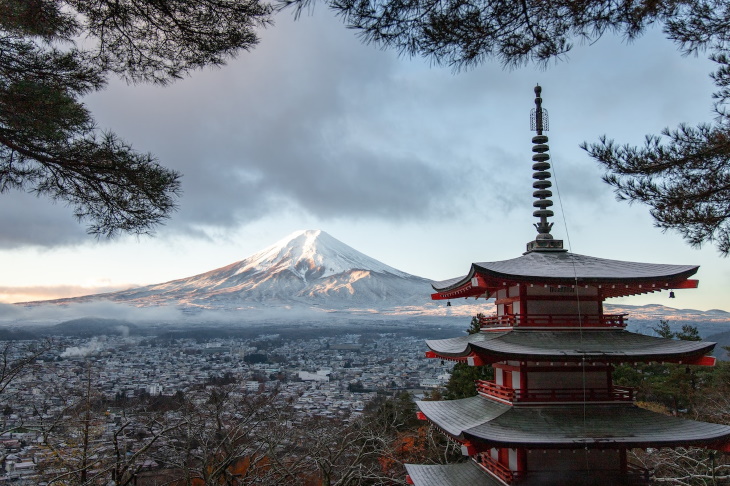
At the center of Japanese architecture and arts, in general, is a deep connection of the human with the natural world. The contemplation of nature serves as a source of spirituality and a canvas for understanding human emotion.
On a practical level, Japanese architecture has deep roots in Korean and Chinese architecture. These traditions were imported to Japan through the spread of Buddhism during the Asuka and Nara eras starting circa 538 AD. But even at this early time, Japanese buildings had a distinct tendency towards the natural. For example, while Chinese temples of the era used painted wood, Japanese buildings utilized exposed wood.
At this time, key elements emerge in Japanese architecture. Most of these have a spiritual meaning. For example, the color red is common in many Japanese temples and shrines, as it is said to repel evil spirits. Similarly, the curved roofs of temples and residential buildings are said to ward off bad spirits that would fall off the curved roof - the Japanese believed.
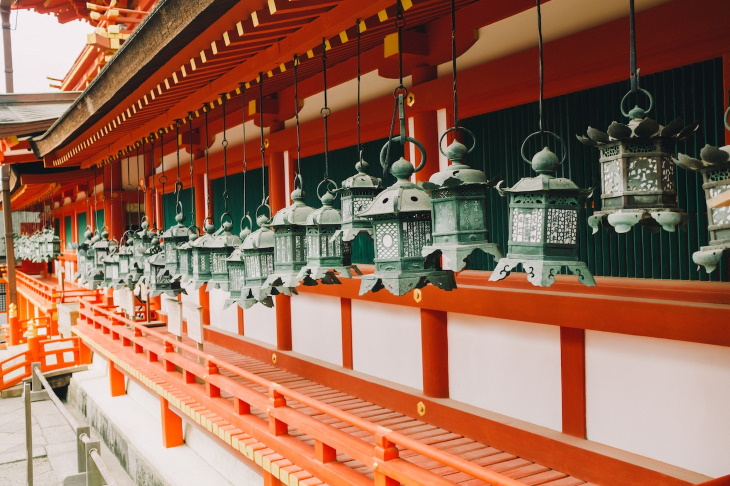
Between 794-1185 AD during the Heian period when aristocratic life was expanding and architectural design started to become secular, we notice distinctly Japanese traits emerging in architecture. Low ceilings and verandas that create a relaxed environment emerge at this time.
Traditional Japanese homes had low ceilings by modern standards - around 220 cm (7.2 ft). This has to do with the absence of chairs and tall tables in these homes. Instead, people would sit on tatami mats and have low tables, and therefore, the ceiling height was quite comfortable.
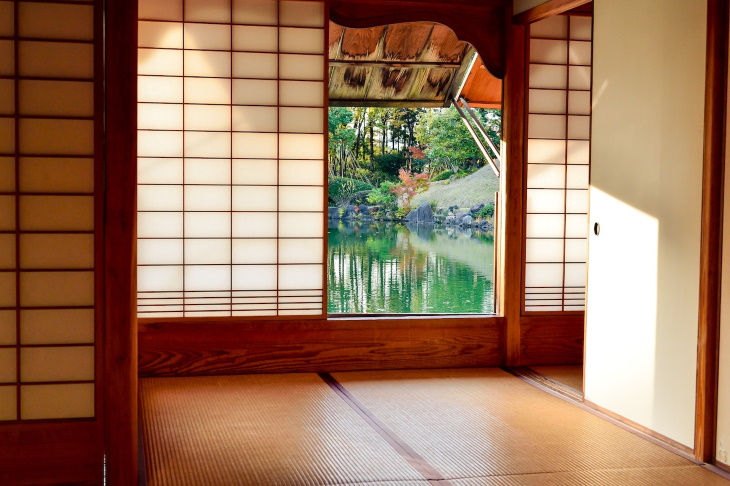
Older houses also have a raised veranda around the perimeter of the house called an engawa. Usually, the engawa would open up into the garden - linking the living space with nature.
Traditional Japanese homes also had sliding doors with paper windowpanes. The sliding door called fusuma allowed the inhabitants to customize and divide large spaces into smaller rooms depending on the occasion. As for the material, the door frame was covered with washi paper that is both incredibly lightweight, slightly reflective, and easy to dismantle and replace.

Under Western influence, Japanese homes became taller, and tatami mats were replaced by chairs. Still, modern homes retain a minimalist feel and open spaces overlooking nature, continuing the long-standing traditions even today.
One last fascinating characteristic of modern Japanese buildings is that they are intentionally built NOT to last. The average lifespan of a building is no more than 20-30 years, and older buildings tend to be demolished.
Now that you know the basic elements of Japanese architecture, try to find them in these iconic Japanese structures.
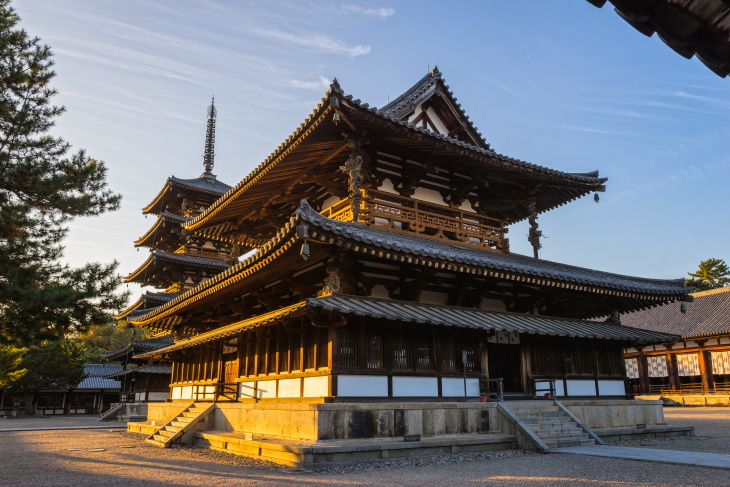
Located near the modern city of Nara, a former Japanese capital, the Horyu Temple is one of the most important buildings in the world. The main hall of the temple is the oldest wooden building in the world and a UNESCO World Heritage Site.
The wooden temple was constructed during the rule of Prince Shōtoku in 607, as his private temple. It was one of the Seven Great Temples, the most influential Buddhist institution in all of Japan. In 670, the original temple had been destroyed by lightning, but it was quickly rebuilt. A tree ring analysis of the five-story pagoda concluded that the wood dates back to 594, suggesting that parts of the building were saved from the fire.
The Horyu Temple is no less important stylistically, as its asymmetrical layout signals a step away from Chinese architecture and the birth of purely Japanese aesthetics.
Related article: These Japanese Concepts Will Change Your Life Forever
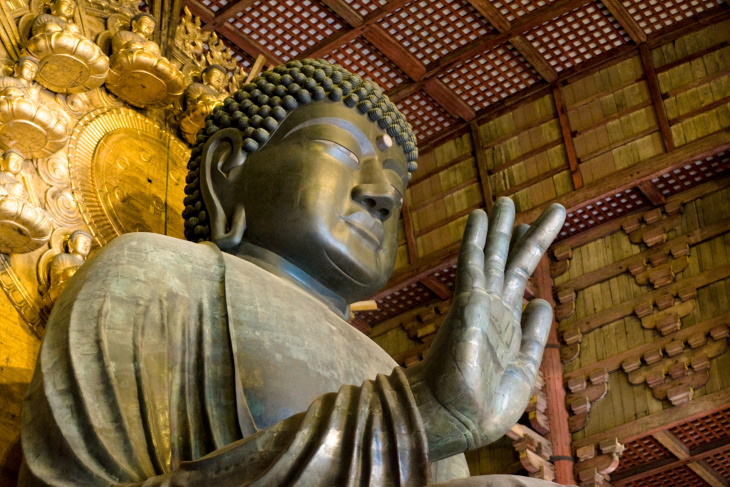
In the 8th century AD, emperor Shōmu began strengthening his power by introducing Buddhism to Japan. To establish the new religion, he ordered a huge temple complex similar to those that existed in China. Called the Tōdai Temple, the building housed a massive 15-meter (50 ft) tall cast-bronze statue of the Great Buddha at the center. Unfortunately, only fragments of the original 752-temple have survived.
In 1195, the Great Buddha Hall was rebuilt, but most of the present-day sculptures and buildings date back to a reconstruction completed in 1692. The reconstructed Great Buddha statue clearly gives everyone who sees it an understanding of Emperor Shōmu’s ambitions in spreading Buddhism.
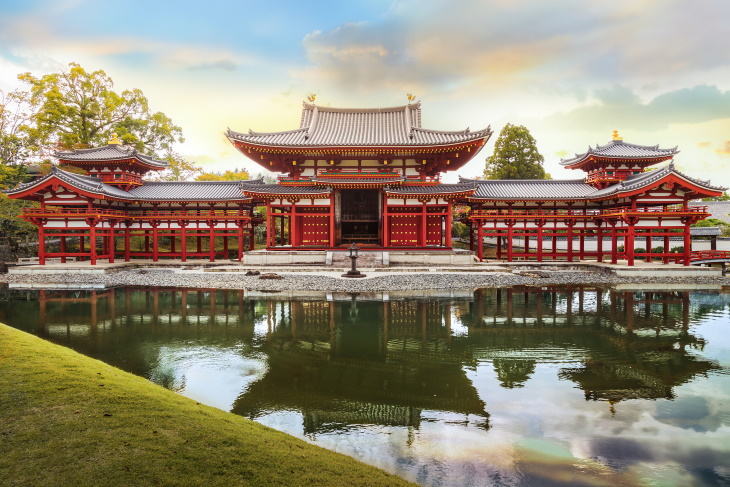
Located in the small town of Uji near Kyoto is the imposing Byodo-in temple. If it looks familiar, that’s probably because this building appears on the Japanese 10-yen coin.
This 10th-century structure marks the time in Japanese history when most temples were inspired by Chinese architecture. The building is an example of the Pure Land style of architecture that intended to represent a temple as a kind of paradise on Earth. It’s symmetrical, lavishly decorated, and pleasing to the eye.
Phoenix Hall is the most famous part of the building. It has phoenix statues perched on the roof and a colossal wooden Buddha statue covered in gold leaf. The temple also houses a beautiful garden and a treasury full of artifacts accumulated throughout the temple’s millennium-long history. The temple has recently undergone a massive restoration, so now is a great time to visit.
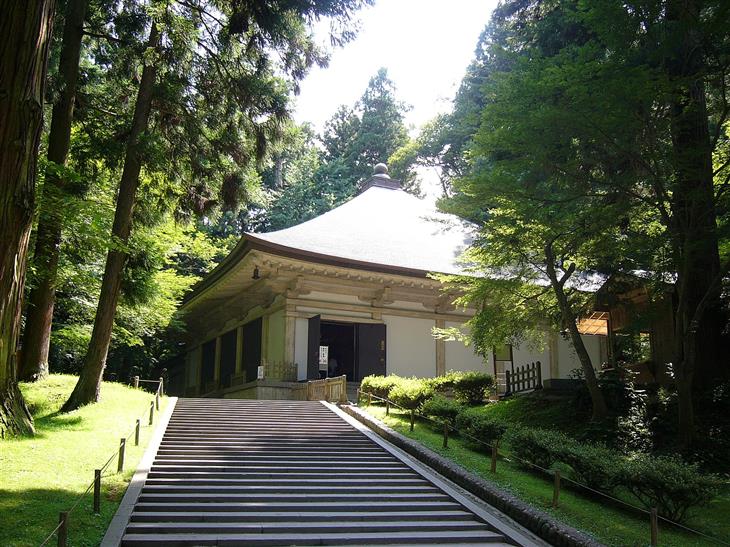
The Chuson Temple Konjikido (completed circa 1124) was the first building Japan proclaimed a National Treasure. But why does a modest hut in the forest deserve such privileges? That’s because the outer building is just a shelter called the Kyuoido that protects the dazzling golden Konjikido from the elements.
So, what is this Konjikido? It’s a small building that depicts Chuson Temple at its height and enshrines the mummies of the Fujiwara samurai clan’s leaders.
The Chuson-ji was once a massive Buddhist temple with 40 halls and pagodas, and over 300 monks. The temple flourished for centuries and amassed thousands of cultural treasures, but it gradually fell into decline and was nearly completely destroyed by a fire in 1337. But the Konjikido, as well as many of the treasures, survived.
The building is completely covered in gold leaf and decorated with pearls, wood carvings, lacquer, metalwork, and paintings. Each of these elements is characteristic of 12th-century (late Heian) Japanese art.
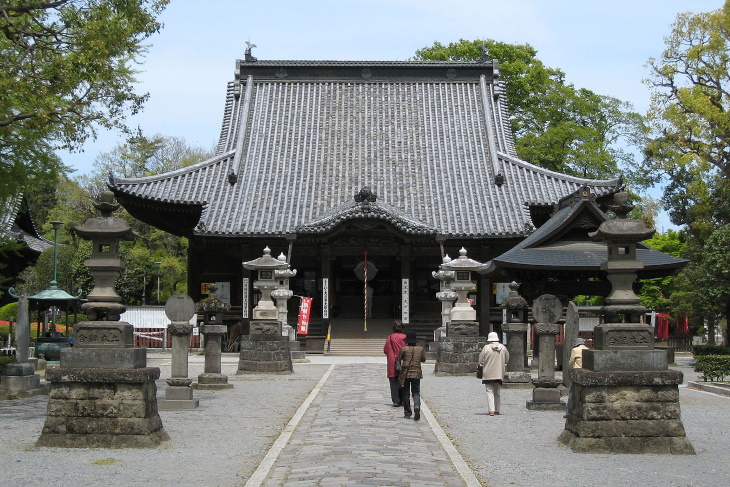
This Buddhist temple has a fascinating history. The main hall, or the Hondo, began as no temple at all, but a fortified samurai home of the Ashikaga clan. In 1196, Yoshikane Ashikaga converted his family home into a Buddhist refuge and became increasingly religious himself. This is how the former samurai headquarters turned into a temple.
Located near Ashikaga, the temple takes up 4 hectares (10 acres). It was constructed in the 12th century and upgraded several times since. Still, its life as a stronghold can still be seen today, which is why the Bannaji Hondo was added to the list of “Japan’s Top 100 Castles.”
The former samurai home is surrounded by moats, ramparts, and four fortified gates. The Bannaji Temple is a stunning architectural structure complete with a sloped rectangular roof characteristic of the Japanese Middle Ages. The temple is famous for its onigawara - "devil tile" in Japanese. These were decorative figures placed at the corners of the roof - not dissimilar to Medieval gargoyles of European churches.
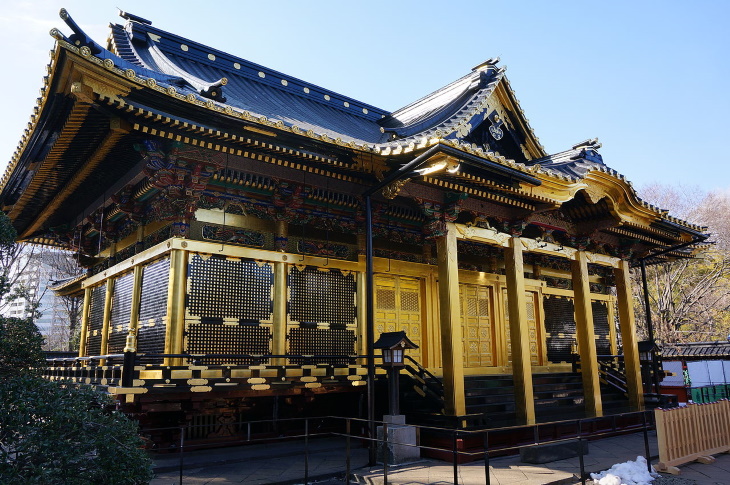
The Toshogu Shrine is the resting place of Tokugawa Ieyasu, the founder of the Tokugawa Shogunate and the most famous samurai leader in history. Completed in 1617 by the great shogun’s son Hidetada, the shrine is located in Nikko on Japan’s main island. The mausoleum is a wonderful example of traditional Japanese architecture as a whole, but it is the Yomeimon gate that draws the most attention.
The structure is intricately decorated with 300 colorful carvings of animals, such as giraffes and lions, as well as dragons and Chinese sages. The three "see-no-evil, speak-no-evil, hear-no-evil" monkeys are among the most popular. For its beauty, the gate is sometimes called Higurashi-no-mon, a gate that “one could admire until sundown and not tire.”
Throughout the Edo period, the Tokugawa shogunate carried out annual processions from Edo to Nikko Toshogu every spring and autumn to deify Tokugawa Ieyasu. These memorable events were known as "processions of a thousand warriors.”
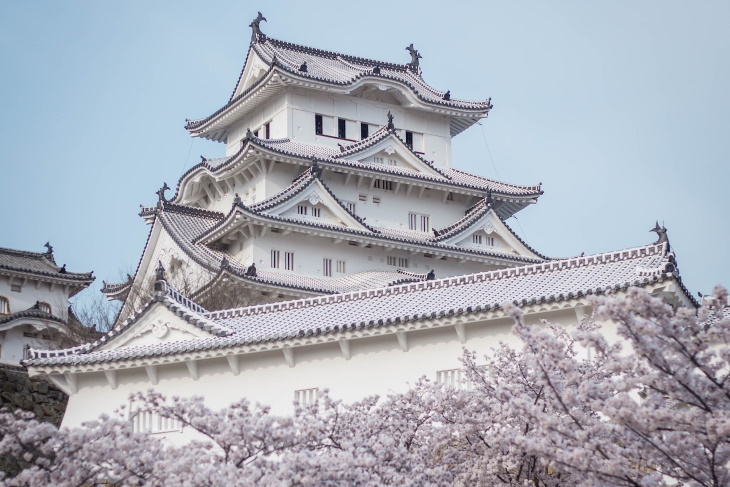
The Hikone Castle is a magnificent building from the Edo Period (1603-1867) - a time of stability, prosperity, flourishing art, and cultural maturation in Japan. Few buildings reflect all these changes like the elegant castle in the city of Hikone, one of the best-preserved castles in the country. It is one of just five Japanese castles on the National Treasure list.
The three-storied hilltop castle was completed by 1622. Until 1868, it was the seat of the Ii daimyo, the local feudal lord. Like a proper castle, it has several turrets, moats, gates, and bridges, giving visitors a good idea of the typical architecture of the feudal era in Japan. Inside the castle is a beautiful garden complete with a pond, bonsai, and cherry blossom trees.
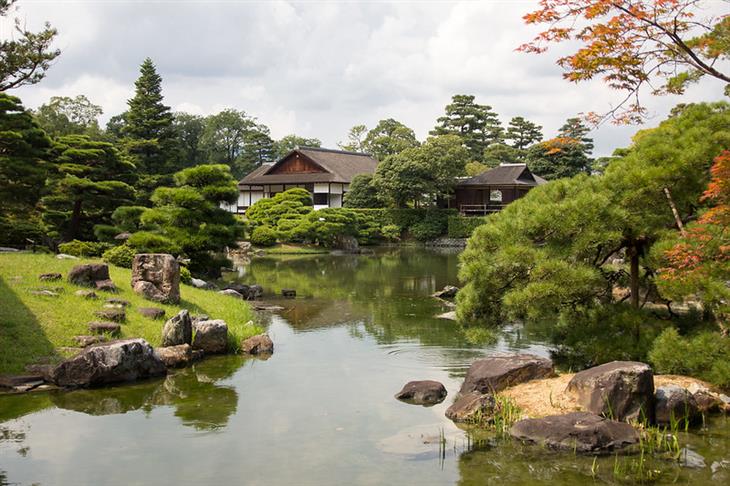
Travel to the suburbs of Kyoto to view one of the best examples of a traditional Japanese house, complete with gardens and outbuildings. The 17th-century imperial residence is one of the best traditional Japanese gardens you can find. Strolling through the inside garden, you’ll stumble upon four separate teahouses - a development spurred by the creation of the tea ceremony during the Muromachi (1333-1573) and Momoyama Periods (1573-1600).
The perfectly-manicured garden features a huge variety of tree species scattered around the main pond. Meandering paths take visitors through the gardens, allowing them to appreciate a different color palette of the foliage with every changing season.
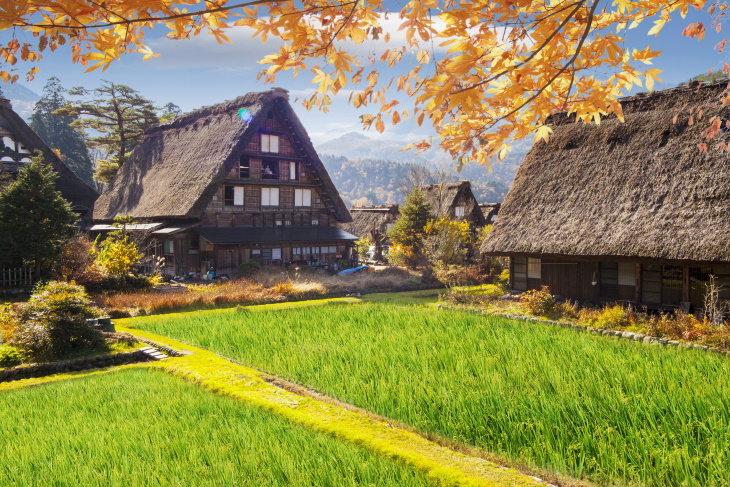
Japanese architecture has many faces. One unique style of residential architecture is the traditional Gassho-style house. These tall farmhouses were common across the mountainous parts of the country between the 17th and early 20th centuries, but today, fewer than 200 of them exist. Most of them are located in only three villages (Ogimachi, Ainokura, and Suganuma), although you can also find a reconstructed model at the Takayama Hida Folk Village Museum.
Gassho-style Farmhouses have sloped thatched roofs that appear like “palms joined in a prayer position” - hence the name Gassho.
Traditionally, each of the three or four stories of the house was used both as a workspace and a living space. This allowed the inhabitants to work all winter, even during heavy snowfalls. The square openings at the gable end provided natural light and ventilation to the attic.
These wooden cottages were built without nails, yet they can withstand heavy snowfall thanks to the sloped roof that makes snow slide off.
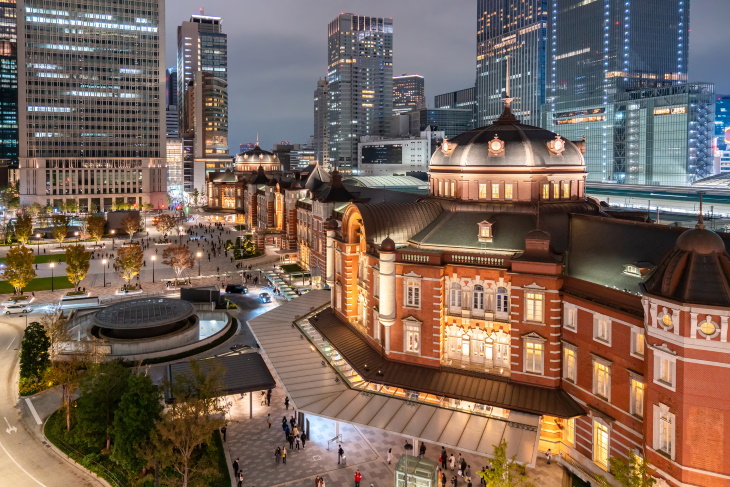
Tokyo Station is the main public transportation hub of the capital. It’s right there in the heart of Tokyo, always busy with locals and tourists from all over the world. The architecture of this iconic building marks a different part of the country’s history - the time when Japanese architects attempted to replicate European buildings.
Tokyo Station was envisioned by Tatsuno Kingo, a famous Japanese architect who also developed the design of the Bank of Japan. Opened in 1914, the railway station has an iconic red brick facade that stands out from the surrounding skyscrapers.
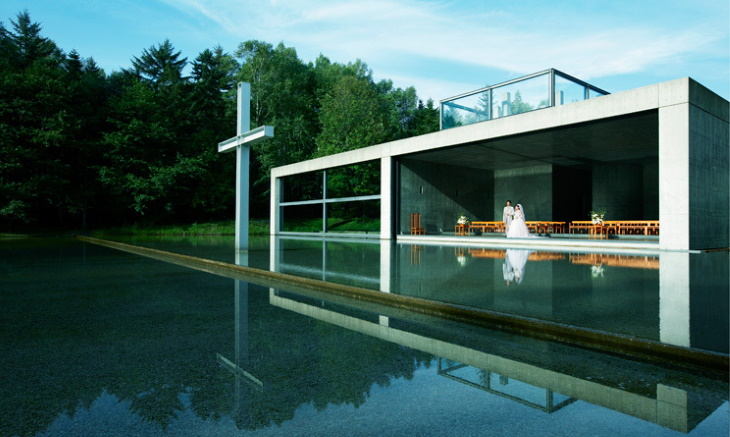
Chapel on the Water is a small privately owned wedding chapel in Tomamu, Hokkaido. It looks like a completely modern building, but it’s actually from 1988. This only goes to show how much of an influence Tadao Ando, a famous Japanese architect, has had on contemporary architecture.
The minimalist concrete chapel has a floor-to-ceiling window that opens to a large pool and a symbolic cross in the water. This follows the Japanese tradition of shakkei, where a building is part of a larger natural canvas. The connection of the building with the surrounding water and green garden creates a chance for peaceful observation and unity with nature.

Globalization had a massive impact on Japanese architecture. As a tech giant, Japan had to keep up with the trend of building high-rise skyscrapers. And in the end, Japanese architects emerged victorious, paving the way for global contemporary trends in architecture.
An early example of such a modern building is the Tokyo Metropolitan Building. Affectionately shortened to Tochō, the twin towers of this building stand out in Tokyo’s Shinjuku business district. The building was developed by Kenzo Tange, a world-famous 20th-century architect that meshed modernism with traditional Japanese buildings. Certainly, the high-rise towers look like a retro-futuristic dream today!
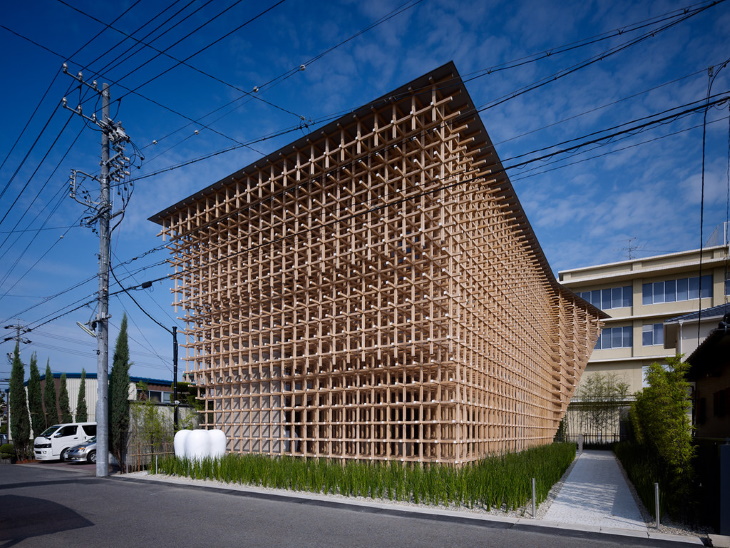
Even today, Japanese architects continue pushing the limits of traditional building materials like stone and giving them an appearance of delicacy that you’d only expect from wood or glass. The modern architect Kengo Kuma is a master of this approach.
One of our personal favorite examples of his work is the GC Prostho Museum in Kasugai-shi completed in 2010. In creating this building, Kuma was inspired by a traditional Japanese wooden toy called a cidori.
Like the toy, Kuma thought of linking the exterior frame without the use of glue. The semi-transparent frame invites natural light, following the Japanese traditions of linking a place with its natural surroundings.
Related Article: When Nature Meets Architecture - 11 Green Buildings Worldwide
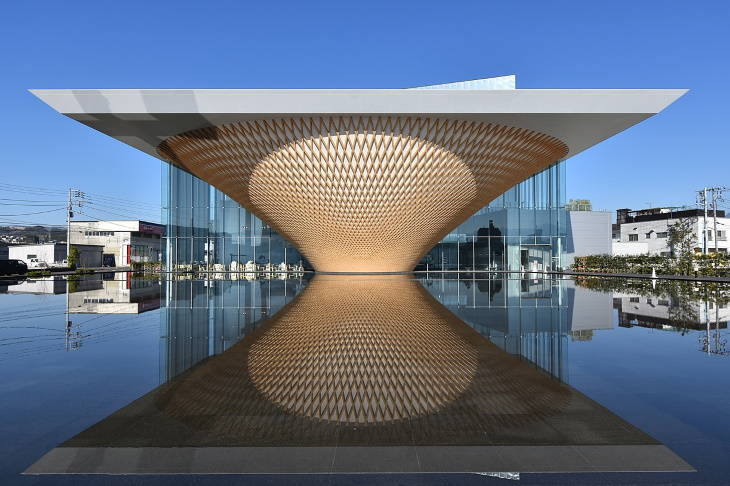
In Japan, the link between nature and architecture isn’t limited to the traditional garden. The buildings themselves draw inspiration from the most iconic natural symbols in the country. Take Mt. Fuji World Heritage Center, for example. This building is a museum dedicated to Mount Fuji, and it also looks just like Fujisan.
Mt. Fuji World Heritage Center was developed by Shigeru Ban and opened in 2017. The five-storied museum looks like Mt. Fuji turned upside down, but perceptive visitors will notice that the reflection of the building in the pool is just like the nearby mountain.
Apart from a variety of exhibitions about the volcano's history, significance, and seismology, the museum has a viewing with great views of Mt. Fuji.
References: Britannica, Art in Context, Japan-Talk, Rethink Tokyo